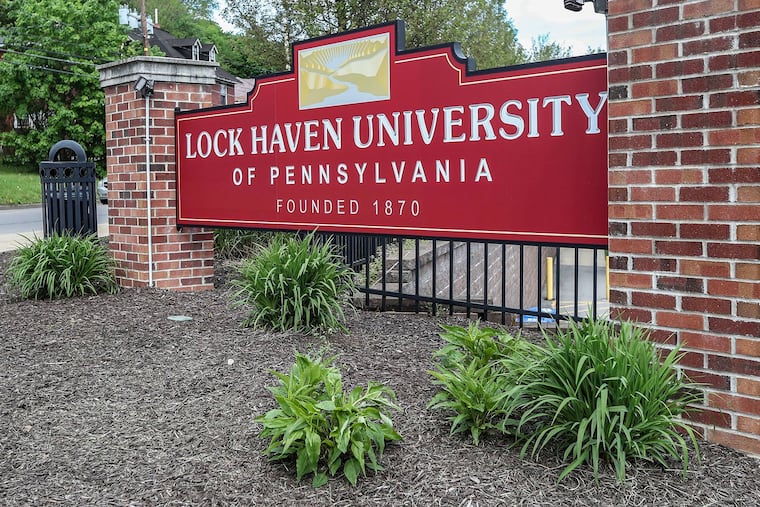Merger of six Pennsylvania state universities gets OK, the biggest change in the system’s history
The decision was one of the last significant hurdles for the plan to clear, though schools continue to wait for word from the NCAA on whether each of the six campuses can maintain their sports teams.

Pennsylvania’s state system can proceed with plans to merge six of its 14 universities into two new entities, its accrediting body said Tuesday.
The decision, announced by the Middle States Commission on Higher Education on its website, was one of the last significant hurdles for the plan to clear, though schools continue to wait for word from the NCAA on whether each of the six campuses can maintain its individual sports teams.
» READ MORE: Board oks controversial plan to merge six universities into two
Under the plan, the biggest change in the state system’s nearly 39-year history, Bloomsburg, Mansfield, and Lock Haven Universities in north-central Pennsylvania will become one entity, known as the Commonwealth University of Pennsylvania, though each campus will remain intact and continue to use its individual name, mascot, and logos for most messaging. That includes the degrees students are awarded, though those degrees must carry the name of the new entity, with the individual campus as a secondary name, according to Middle States. The other merger involves California, Clarion, and Edinboro, which will become Pennsylvania Western University, PennWest for short.
The mergers take effect July 1.
“Together, Bloomsburg, Lock Haven, and Mansfield embody the power of three, which will create a higher education experience, the likes of which is not possible without integration,” Bashar Hanna, president of Bloomsburg and interim president of Lock Haven and Mansfield, said in a statement.
Daniel Greenstein, chancellor of the Pennsylvania State System of Higher Education, which oversees the 14 state universities, also endorsed the action, calling it “another positive step” in the process. He was providing an update on the mergers to the Pennsylvania Senate Appropriations Committee when the decision was handed down.
“I’m pleased with the progress and delighted by the energy, frankly,” he told senators.
Middle States will require the system and its universities to report on progress in a number of areas over the coming months, including mission, faculty, academic programs, and fiscal resources. Two of the universities — Bloomsburg and California, the primary leaders — will have degree-granting authority under the new names. The four others will not, according to the commission decision.
Greenstein told senators that the Commonwealth University is on track to get to a balanced budget within the next few years, but it would take a bit longer for PennWest.
The mergers, approved by the state system’s board of governors last July, are scheduled to take effect for the 2022-23 academic year, though some of the curriculum integration will be phased in over a longer period. The campuses in both groups will report to a single leadership team and operate with one staff and budget.
» READ MORE: Major change could be coming for Pennsylvania’s state universities
System officials say the change will grow enrollment, save millions, and improve operating margins within three to five years. But the integrations also yielded a backlash from some faculty, students, and alumni, who feared the schools would lose their identities, see a further drop-off in enrollment, and offer students fewer in-person learning opportunities.
» READ MORE: Pennsylvania plans to merge 6 state universities. But some fear ‘a slow death’ for troubled schools.
System officials countered that the mergers will offer students a greater array of courses and enable them to graduate more quickly. They also say that although students in some majors may need to take some classes online, 75% of students concentrated in eight to 10 majors will have in-person access to all classes.
The state legislature and Gov. Tom Wolf approved legislation in 2020 that allows the system, formed in 1983, to consolidate or merge some campuses. The system quickly followed with an announcement of its intention to study the potential integration of some of its universities. The announcement came after more than a decade of enrollment decline and continued financial struggles.
The 88,651-student system has lost more than a quarter of its enrollment since 2010. This year, as college enrollments have dropped nationally, the system recorded its largest one-year enrollment decline in more than a decade.